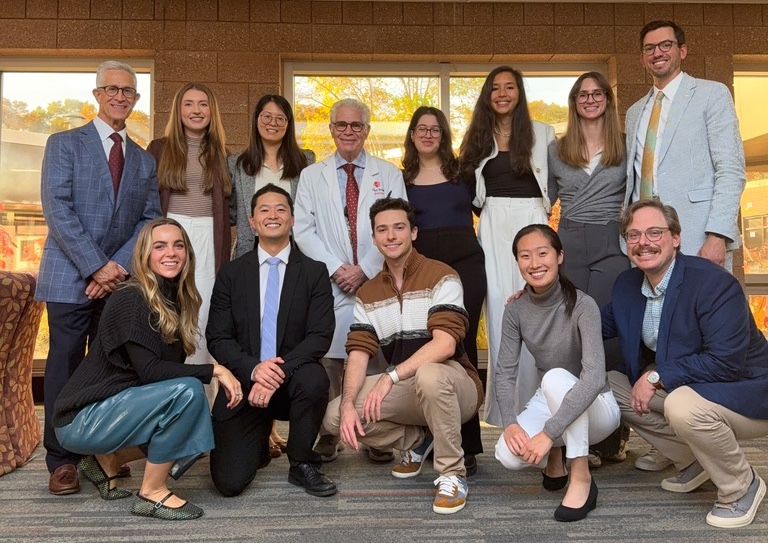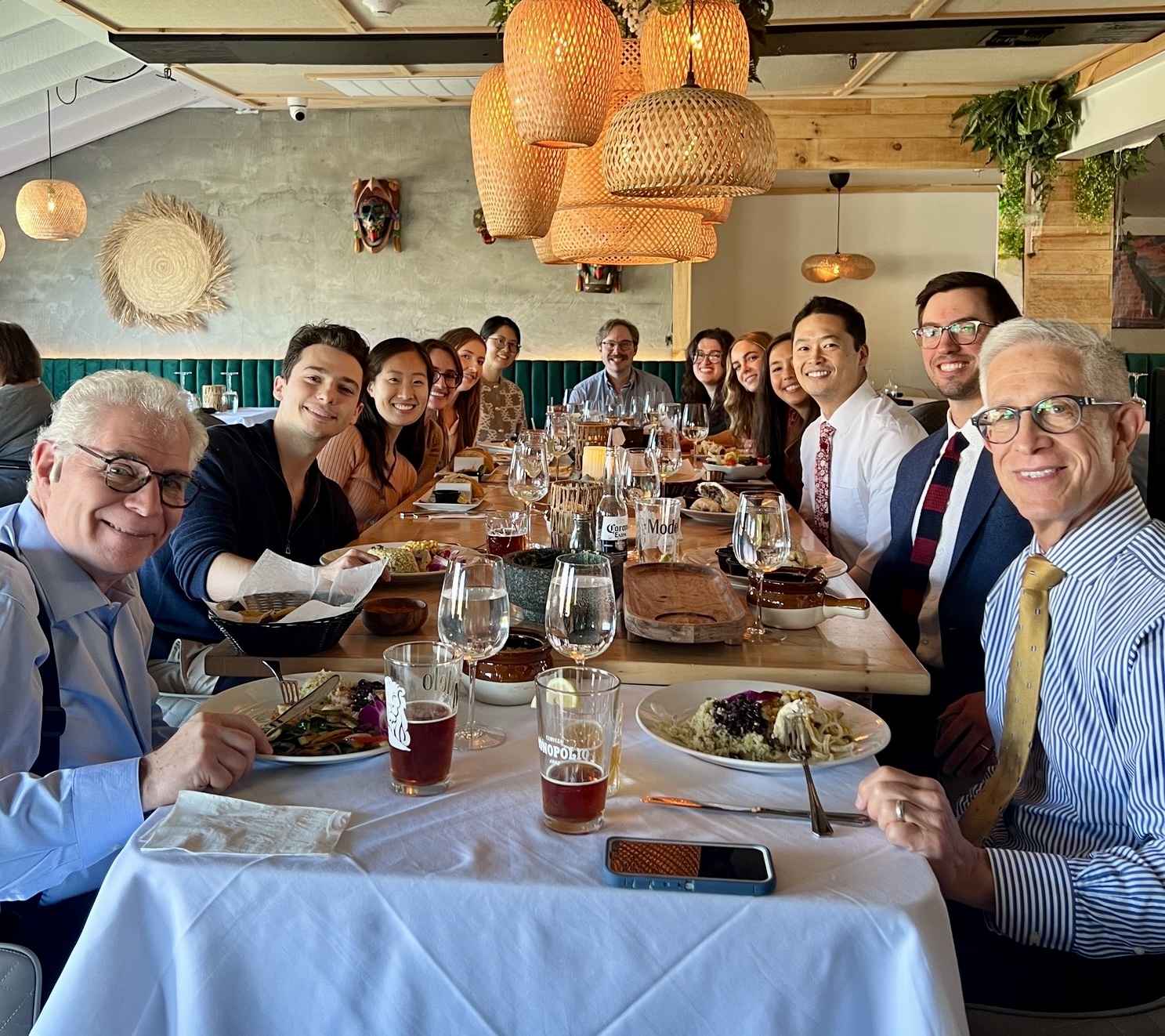
Our faculty and residents have given poster presentations, oral presentations and workshops at local, regional and national physician and dental anesthesia meetings. Residents and faculty within the Division of Dental Anesthesiology have participated in clinical research and have published in peer reviewed journals.

Ralph Epstein, DDS is the Chief of the Division of Dental Anesthesiology and Program Director for Dental Anesthesiology Residency program. He has the academic position of Clinical Associate Professor. Dr. Epstein is a member of the Anesthesia Executive Committee and is an Extended Member of the New York State Board for Dentistry. His clinical responsibilities are to train the dental anesthesiology residents in the operating room and in his Great Neck office. |

Martin Boorin, DMD oversees the didactic education within the division. This includes supervising journal clubs, senior PowerPoint presentations and preparing simulations in our Clinical Skills Center. He also has the responsibility of preparing the oral board review sessions. He has the academic position of Clinical Assistant Professor. His clinical responsibilities are to train the dental anesthesiology residents in the operating room and in private offices located on Long Island, in New York City and Westchester County. |

David Pfeffer, DDS oversees the didactic moderate sedation course given to the pediatric dental residents and the periodontal residents. He also supervises the clinical moderate sedation training for the periodontal residents and the dental anesthesiology residents. This training is in the faculty practice section of the School of Dental Medicine’s Clinical Care Center. He has the academic position of Clinical Assistant Professor. Dr. Pfeffer also trains the dental anesthesiology resident in private offices located on Long Island, in New York City and Westchester County. |

Jonathan Bacon, DDS completed his dental anesthesiology specialty training at Stony Brook in 2018. He also completed pediatric dental specialty training prior to his dental anesthesiology training. He currently is an Attending Dentist, Division of Oral Health, Instructor of Pediatrics, George Washington University. Children’s National Hospital, Washington, DC. |

David Guthrie, DMD completed his dental anesthesiology specialty training at Stony Brook in 2021. He is currently in private practice in a mobile dental anesthesia group in the Louisville, Kentucky metro area. |

Brandon Key, DDS completed his dental anesthesiology specialty training at Stony Brook in 2023. He currently is on staff University of Texas Health Houston School of Dentistry. He has the academic title of Clinical Assistant Professor. He is also on staff at Lyndon B. Johnson Hospital where he administers anesthesia for head and neck procedures. |

Jonathan Wong, DMD completed his dental anesthesiology specialty training at Stony Brook in 2014. He is currently in private practice at Costal Pediatric Dental & Anesthesia in Virginia Beach, Virginia. |
During their training, the dental anesthesia residents are responsible for providing anesthesia care for all types of medical procedures. They are scheduled in a similar way to the physician anesthesia residents except they are not scheduled in the cardiac or obstetric rotations. A major part of the clinical portion of the anesthesia residency program is spent with Dr. Boorin, Dr. Pfeffer and Dr. Epstein in dental and oral surgery offices providing the full spectrum of anesthesia care in an office-based venue. Residents average treating around 200 patients in private offices during their 3 years at Stony Brook. Dr. Boorin and Dr. Epstein also supervise anesthesia care in the operating room of Stony Brook University Hospital. Dr. Pfeffer teaches the didactic course for moderate sedation that is given to the pediatric and periodontal residents. He also supervises the clinical training for moderate sedation for the dental anesthesia and periodontal residents at the Stony Brook School of Dental Medicine.
During the 1st year, the dental anesthesia residents receive extensive training with rotations in Stony Brook University Hospital on the following services: cardiology, internal medicine/medical optimization, pre-operative services and rapid response team. In the 2nd year, the residents continue this training with a 4-week rotation in pediatric medicine.
During the 2nd and 3rd years, the residents attend the comprehensive didactic education program called “Academic Wednesdays” that is provided by the physician faculty within the Stony Brook Department of Anesthesiology. This training includes extensive time in the simulation suite with nationally recognized experts in simulation training. The didactic course load is over 190 hours during the 3 years of training.
Clinical anesthesia training in the 1st year takes place in University Hospital, School of Dental Medicine and in private offices. In the 2nd-year of the program, clinical training occurs in the main operating room at University Hospital, Northport VA Medical Center, the School of Dental Medicine and in private offices. The third year starts with PACU/ICU rotations where the dental anesthesia resident is the resident in charge of the PACU/ICU for 4-weeks. This is a very challenging rotation but one that brings all aspects of anesthesia care together and prepares the resident for challenging and difficult situations they may encounter once they graduate. During this 3-week rotation, the PACU resident will oversee difficult airways in the OR. They will perform between 20-60 fiber-optic intubations. They will also respond to all “Code Blues” in the hospital and “Code Ts in the Emergency Department. If patients need to be reintubated on the hospital floors they will fulfill that responsibility. Clinical anesthesia training for this year expands to the Stony Brook Ambulatory Surgical Center providing anesthesia care to pediatric and adult patients in another type of ambulatory venue.

- Guthrie DB, Pezzollo JP, Lam DK, Epstein RH. Tracheopulmonary Complications of a Malpositioned Nasogastric Tube. Anesth Prog. 2020 Sep 1;67(3):151-157.
- Guthrie DB, Boorin MR, Sisti AR, Epstein RH, Romeiser JL, Lam DK, Gan TJ, Bennett-Guerrero E. Retrospective Comparison of Intramuscular Admixtures of Ketamine and Dexmedetomidine Versus Ketamine and Midazolam for Preoperative Sedation. Anesth Prog. 2021 Mar 1;68(1):3-9.
- Lee S, Guthrie DB, Epstein RH. Kawasaki Disease and General Anesthesia for Dental Treatment: A Case Report. Anesth Prog. 2021 Oct 1;68(3):146-153.
- Guthrie DB, Epstein RH, Boorin MR, Sisti AR, Romeiser JL, Bennett-Guerrero E. A Survey of Dentist Anesthesiologists on Preoperative Intramuscular Sedation. Anesth Prog. 2022 Jun 1;69(2):17-23.
- Bacon J, Epstein R. Nonverbal Autistic 30-Year-Old for Full Mouth Dental Rehabilitation with Malignant Hyperthermia. In: Perioperative Medicine: A Problem-Based Learning Approach 2025, Eds: Richman DC, Pulley DD, Oprea AD. Oxford University Press
- Taft A, Lee A, Richman DC, Gupta AK. Pre-Operative Evaluation and Intraoperative Management of a Patient with EDAC (Excessive dynamic airways collapse). PGA 2020
- Key B. Target Controlled Infusion. American Society of Dentist Anesthesiologists 2022
- Lim D. Case report: Petroleum gel based foreign body in the nasopharynx. American Society of Dentist Anesthesiologists 2022
- Nguyen C, Kim J. Management of CRPS Patients undergoing full mouth dental rehabilitation under general anesthesia: a case report. American Society of Dentist Anesthesiologists 2022
- Boorin M. Perioperative respiratory adverse effects during ambulatory anesthesia in obese children. Journal Article Review. American Society of Dentist Anesthesiologists 2022
- Guthrie D. Intraoperative Hypotension Is Associated With Adverse Clinical Outcomes After Noncardiac Surgery. Gregory A et al. Journal Article Review. American Society of Dentist Anesthesiologists 2022
- Oliver B, Jacob S, Winter G, Epstein R, Oleszak SP. Airway Management of an Adult Patient with Pierre-Robin Sequence Presenting for Closure of Gastro-cutaneous Fistula. PGA 2023
- Xiao J, Raventhiranathan N, Epstein R, Boorin M, Oleszak S. Jet Ventilation for Subglottic Stenosis: Case Report and Algorithm for Diagnosis and Treatment of Pneumothorax. Am Soc Dental Anes 2024
- Frusetta C, Bodily S, Epstein R, Boorin M, Oleszak S. An Unanticipated Oxygen Desaturation following Emergence from a Routine General Anesthetic. Am Soc Dental Anes 2024
- Garrity M, Bodily S, Oleszak S, Boorin M, Epstein R. Anesthetic management of invasive papillary thyroid carcinoma complicated by five tracheal ring resection, tracheal reconstruction, and tracheostomy. PGA 2024
- Starr E, Xiao J, Garrity M, Mays T, Epstein R, Boorin M. Airway Management for a patient with Pierre-Robin Sequence undergoing Dental Rehabilitation Under General Anesthesia. PGA 2024
- Lin K, Bargnes V, Bodily S, Elias M, Epstein R, Zabirowicz E. Topicalization & TIVA: A Successful Anesthetic Duo for Endobronchial Oxidized Cellulose Placement in the Treatment of Bronchopleural Fistula. PGA 2024
- Hippensteel L, Boorin M, Chin Up! Advancing Airway Management for Complex Maxillofacial Trauma with Submental Intubation: A Case Presentation. ASDA 2025.
- Garrity M. Anesthetic Management of a Pediatric Patient with Tricuspid Atresia and Fontan Physiology: A multidisciplinary Approach. ASDA 2025
- Eshtiaghpour R, Frusetta C, Kahng J, Boorin M, Epstein R, Marghoob S. Anesthetic Considerations in a Patient with Cervical Osteophytes: A Case Report. ASDA 2025.
- Nerantzinis A, Bargnes V, III, Starr E, Boorin M, Andraous A, Triple Threat of Trismus, Tonsillar Cancer, and Tight Nasal Passage Overcome by a Digitally Pre-Coiled Suction Catheter. ASA 2025
- Gulzar S, Starr E, Bargnes V, Desai A, Andraous W. Navigating Around a Beast: Fiber optic Intubation in the setting of a Large Laryngeal Mass. ASA 2025

